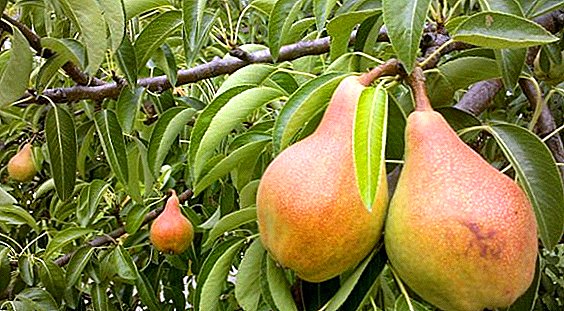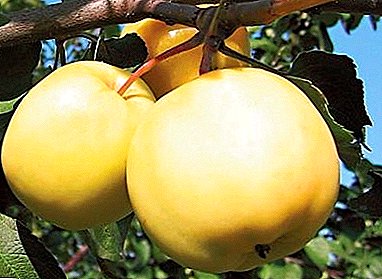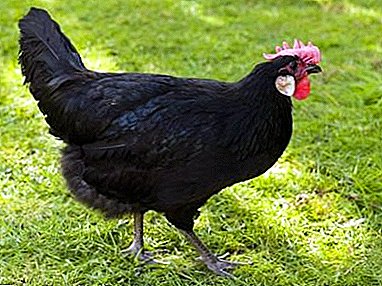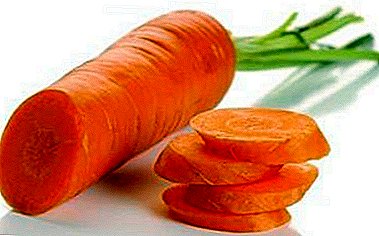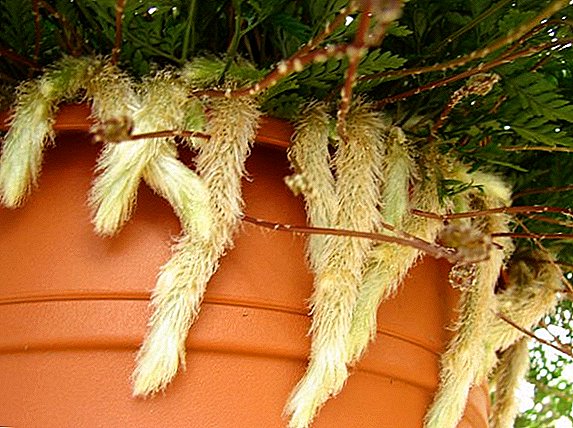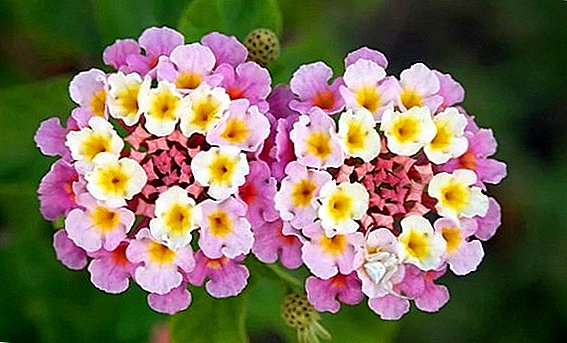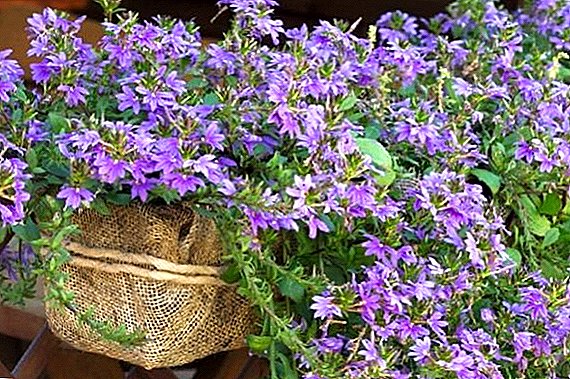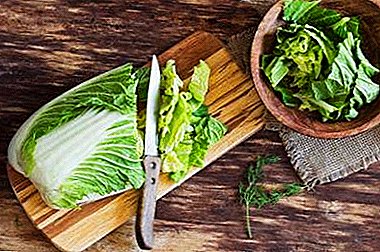
We deal with them every day. We bring them from the store, tear them off the beds and rarely think about the impact they have on our health. But sometimes the most simple and familiar products can pleasantly surprise. All familiar Peking cabbage, for example.
This wonderful plant, which has a mass of useful properties, deserves to get to know him better. Just like her green neighbors on the shelf in the store. In the article we will consider whether the Beijing cabbage and Chinese are one and the same, as well as Iceberg lettuce. We give information about which of these vegetables is more useful, compare them with the usual cabbage to Russians.
Definition and botanical description of vegetable species
Beijing

Beijing cabbage is a cabbage crop, a subspecies of turnip. A biennial plant, but grown in agriculture as an annual. The plant is also known by such names as lettuce, petsai or Chinese lettuce.
"Peking" has very tender, juicy leaves of oblong shape. Leaves wavy or jagged at the edges, with a white projecting median vein. Solid, sessile, with a wrinkled-swollen leaf blade, height from 15 to 35 cm. The color can be from yellow to bright green. Sometimes there is weak pubescence at the base of the leaf. They are assembled in a socket or head of small density.
95% of the plant consists of water. The composition of the product includes various proteins, fats and carbohydrates, fiber.
The product is rich in vitamins A, B, C, E, PP and microelements:
- Contains a very valuable amino acid lysine, which is necessary for the growth and regeneration of tissues and has antiseptic properties.
- Strengthens the immune system, supports the cardiovascular system and the gastrointestinal tract.
- It helps to remove heavy metal salts from the body.
- It is recommended for diseases of the joints and gout.
- It helps strengthen the nervous system, helps to cope with stress and depression, defeat chronic fatigue.
- Improves skin condition.
White-headed

White cabbage (garden) - a biennial plant, agricultural crop; a species of the genus Cabbage, cabbage family or Cruciferous. In agriculture, grown as an annual. The leaves of the shortened stem of the plant are collected in the head. In shape, they can be oval, rounded, flat or even conical. The density of different varieties is also different.
The leaves are large, simple, elastic, with a smooth edge. With small petioles or sessile. The color of the upper leaves is often green, some varieties have a purple hue. The inner sheets are white, sometimes yellowish. The main vein of the leaf is thick, strongly protruding. In Japan, cabbage is grown as an ornamental plant.
- Compresses from the leaves of this culture help to relieve swelling and have an analgesic effect.
- Also, cabbage has anti-inflammatory properties, it stimulates the metabolic processes of the body, has a positive effect on the work of the stomach and heart.
- The product will also be useful for people with kidney disease, gallstone disease and ischemia.
Iceberg lettuce

Iceberg lettuce is a vegetable crop of the Latuk genus of the Astrov family. Refers to the head lettuce. The leaves are broad, light green, juicy and crispy in taste. They can be smooth or hilly, slightly fluffed on the outside and more compact in the middle. Collected in small, loose cabbages, similar to cabbage.
The product is rich in folic acid, vitamins C, B, K and A, choline. In addition, the salad contains phosphorus, potassium, calcium, sodium, copper and magnesium.
- Fiber and dietary fiber contained in the salad, are indispensable in the fight for a slim figure, as they improve intestinal peristalsis.
- The product contributes to the regulation of metabolism in the body and improve blood composition.
- Folic acid, which is so rich in iceberg lettuce, helps to strengthen the nervous system.
- It also helps to cope with stress and emotional disorders.
- It is recommended for active mental loads, such as exam sessions.
Chinese

Chinese cabbage is a cultivated plant of the Cabbage family, a subspecies of Turnip. Do not form a head. Upright leaves on succulent legs up to 30 cm in height are collected in the outlet. There are two varieties that can be distinguished by color. One of the most common varieties of Chinese cabbage - bok-choi. Widely used in Chinese cuisine.
The composition of Chinese cabbage includes vitamins A, K, C, PP and B, trace elements phosphorus, potassium, calcium, sodium and iron. Like other varieties of cabbage, Chinese contains a large amount of natural amino acids, lysine and fiber.
- This low-calorie product can be safely consumed by people who watch their weight.
- The use of Chinese cabbage is an excellent prevention of constipation, as well as a great way to cleanse the intestines from toxins, cholesterol and other harmful substances.
- The leaves of the plant contain ascorbic acid, which is very useful and necessary for human health.
- With regular use, the product improves the elasticity of blood vessels and makes the skin more elastic.
- Also normalizes blood clotting and accelerates the renewal of skin cells.
- Contains vitamins that are good for sight.
- Helps with anemia.
- Chinese cabbage juice has a bactericidal effect, can be used to treat burns, ulcers and wounds.
- Folic acid in the composition of the product is necessary for the brain to work and for the full development of the fetus during pregnancy.
Detailed analysis of the differences of Peking cabbage
From iceberg
 Iceberg lettuce and Peking cabbage are so close in composition and flavor that housewives often replace one vegetable with another in different dishes.
Iceberg lettuce and Peking cabbage are so close in composition and flavor that housewives often replace one vegetable with another in different dishes.
Both cultures have juicy crunchy leaves. Beijing and Iceberg differ in the shape of the leaf and head.
Peking leaves have an elongated shape, cabbages are cylindrical.
A head of Iceberg lettuce is rounded, more like a cabbage. But at close range, round, thin, voluminous sheets and their looser arrangement indicate that this is exactly the salad.
From white
Beijing cabbage differs from white cabbage in the shape and density of the heads. The leaves of garden cabbage are round, elastic and smooth, the cabbages are round and dense. In Beijing - delicate thin oval leaves are collected in a loose head of a cylindrical shape.
Beijing cabbage combines the properties of lettuce and cabbage. But none of these plants can not save all the contained vitamins during the winter. Only Beijing cabbage has such an amazing property.
From chinese
Chinese cabbage, unlike Peking, does not make heads. Beijing cabbage leaves are more tender and juicy. The stalk of Chinese cabbage is more coarse, gradually moving into the central part of the leaf vein. For peking, a white, flat or triangular vein located in the middle of the leaf is characteristic. Beijing cabbage is much larger than Chinese cabbage.
All these vegetables contain a lot of healthy substances and help us get rid of many ailments. They make us younger and more beautiful. They inspire to create dozens of different dishes and give them a unique taste. Well, which of these wonderful plants to give preference is a matter of taste of each of us.



